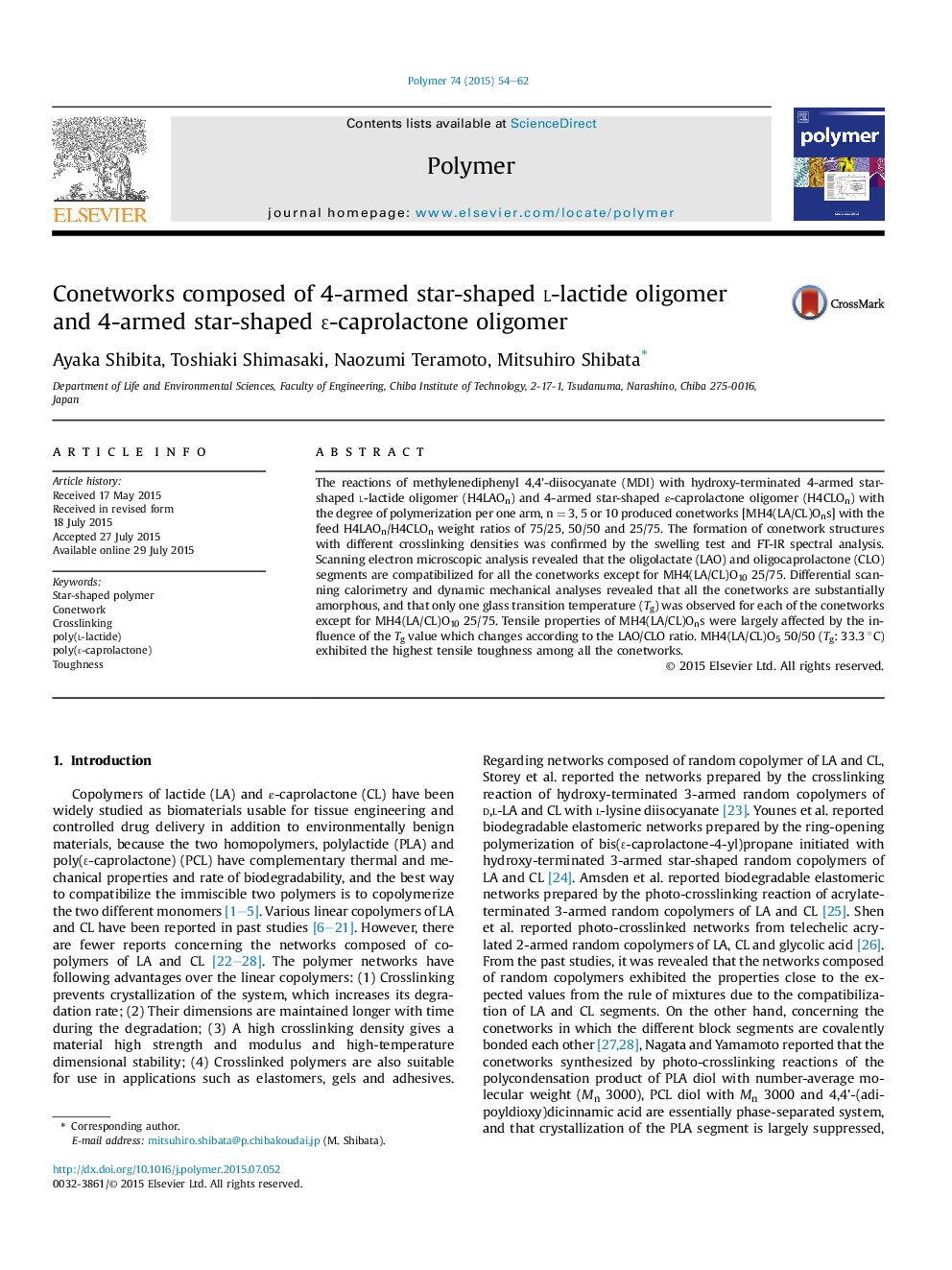| Article ID | Journal | Published Year | Pages | File Type |
|---|---|---|---|---|
| 5179739 | Polymer | 2015 | 9 Pages |
â¢New conetworks composed of 4-armed star-shaped PLA and PCL were prepared.â¢The conetwork with a shorter arm length exhibited a better compatibility.â¢All the conetworks were amorphous polymers.â¢The glass transition temperature changed in accordance with the PLA/PCL composition.â¢The tensile properties were largely affected by the glass transition temperature.
The reactions of methylenediphenyl 4,4'-diisocyanate (MDI) with hydroxy-terminated 4-armed star-shaped l-lactide oligomer (H4LAOn) and 4-armed star-shaped ε-caprolactone oligomer (H4CLOn) with the degree of polymerization per one arm, n = 3, 5 or 10 produced conetworks [MH4(LA/CL)Ons] with the feed H4LAOn/H4CLOn weight ratios of 75/25, 50/50 and 25/75. The formation of conetwork structures with different crosslinking densities was confirmed by the swelling test and FT-IR spectral analysis. Scanning electron microscopic analysis revealed that the oligolactate (LAO) and oligocaprolactone (CLO) segments are compatibilized for all the conetworks except for MH4(LA/CL)O10 25/75. Differential scanning calorimetry and dynamic mechanical analyses revealed that all the conetworks are substantially amorphous, and that only one glass transition temperature (Tg) was observed for each of the conetworks except for MH4(LA/CL)O10 25/75. Tensile properties of MH4(LA/CL)Ons were largely affected by the influence of the Tg value which changes according to the LAO/CLO ratio. MH4(LA/CL)O5 50/50 (Tg: 33.3 °C) exhibited the highest tensile toughness among all the conetworks.
Graphical abstractDownload high-res image (242KB)Download full-size image
